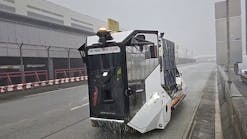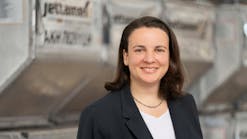India’s rise as a leading supplier of pharmaceutical products has helped Hyderabad’s Rajiv Gandhi International Airport (RGIA) become an important hub in the nation’s burgeoning pharmaceutical export trade. India is the world’s largest generic supplier of pharmaceuticals, accounting for some 20 percent of the global generic medicines.
RGIA airport is located in Hyderabad, the capital of the Indian state of Telengana. The airport is operated by GMR Hyderabad International Airport Ltd. (GHIAL), a public-private venture comprised of public entities Airports Authority of India and the Government of Telangana as well as a private consortium of the GMR Group and Malaysia Airports Holdings Berhard (MAHB). MAHB is, meanwhile, divesting its involvement in the airport.
The airport has one passenger terminal, a cargo terminal and two runways. There are also aviation training facilities, a fuel farm, a solar power plant and two MRO facilities. RGIA was India’s sixth busiest airport in 2017 in terms of India’s passenger traffic, attracting more than 18 million passengers in the fiscal year spanning 2017 and 2018.
Some of the airlines that operate at Hyderabad include British Airways, Air Arabia, Air India, AirAsia, AirAsia India, Alliance Air, Cathay Pacific, Emirates, Etihad Airways, flydubai, GoAir, Gulf Air, IndiGo, Jazeera Airways, Jet Airways, Malaysia Airlines, Qatar Airways, SilkAir and Thai Air, among others.
But there are also a number of cargo carriers which operate freighters to and from Hyderabad. These include Cathay Pacific Cargo, Lufthansa Cargo, Qatar Airways Cargo, Thai Cargo, Turkish Airlines Cargo and Quikjet Cargo.
Pharmaceutical shipments are a mainstay of the airport’s cargo traffic; indeed, pharma products account for more than 60 percent of the airport’s cargo exports. The airport’s pharma cargo experienced an average 10-percent growth rate in the last five years.
India is also a huge pharmaceuticals market, the world’s third largest in terms of volume and the 13th largest in terms of value, according to a report by Equitymaster. Not surprisingly, a number of cargo carriers are launching or adding new services to India.
Peter Gerber, Lufthansa Cargo’s CEO, highlights the significance of pharmaceutical cargo for his carrier, which opened its first pharma hub at RGIA in May 2011, and Hyderabad’s role in this traffic.
“Pharma products account for a substantial volume of Lufthansa Cargo’s export traffic from India, with a large chunk originating from Hyderabad and also flown from Mumbai,” he says, adding that air-cargo pharmaceutical shipments require speedy handling.
A large number of Indian pharma shipments change planes at Frankfurt airport, the carrier’s hub. To facilitate the transit and retain the products’ effectiveness amid temperature fluctuations, Lufthansa Cargo has set up a cool center at Frankfurt airport.
“This is one of Europe’s biggest hubs for temperature-sensitive air freight consignments. We are meticulous about maintaining precise temperature control, and exclusive handling by qualified specialists to ensure high-quality standards,” Gerber says.
Hemanth D.P., chief operating officer-aero, commercial, cargo at the GMR Group foresees RGIA’s plans to establish connections to over 80 percent of the world in the future.
“Our future plans include building a perishables terminal, an express terminal and expansion of the current cargo village – bonded and non-bonded. We have just branded our free trade zone as GIFTZ (GMR International Free Trade Zone),” he says.
Hyderabad Airport also benefits from the cluster of Indian pharma companies within its geographic radius. Its cargo terminal building has a dedicated temperature-controlled facility to handle pharmaceuticals and vaccines.
The Indian Government recently approved the establishment of a pharmaceutical formulations unit in close proximity of the airport. After some initial opposition, the Indian government’s Expert Appraisal Committee (EAC) acquiesced in the project proposed by the GMR Group to set up a multi-sector industrialized special export zone (SEZ) which will include a pharmaceutical formulations company.
The pharmaceutical unit was needed because, according to the GMR Group, growth of its special export zone (SEZ) was hampered by space constraints in the past years and its present rate of occupancy was just around 11 percent. A large part of the SEZ will be allocated to the pharmaceutical formulation company – Citron Formulations – which will occupy some 40 acres of land. There are also other units dedicated to gems and jewelry, electronics hardware and the information technology sector, commercial buildings such as service apartments and banking facility, logistics and warehousing.
The pharmaceutical formulations company is expected to produce tablets (3 billion units per annum), pharmaceutical capsules (450 million units per annum) and injectables (18 million units per annum).
An aviation official, speaking on condition of anonymity, says that both the airport and facilities around it were big attractions.
“A city can build an airport, but our airport is building a city around it – an Aerotropolis – with the infrastructure and the economy centered around the airport,” he explains, adding that foreign ground-handling operators were also interested in coming to Hyderabad.
GHIAL is planning to develop this Aerotropolis, spread across 1,000 acres in its vicinity and using green technologies. The airport city will also house aero related economic activities like logistics and Aero-SEZ.
RGIA connects with 60 destinations across India and abroad; it has attracted many corporate groups such as TATA, CFM, UTC, Amazon Fulfilment center, GMR MRO, Safran and FSTC.
According to S.G.K. Kishore, the CEO of GHIAL, the current expansion envisaged creation of additional capacity across terminal, airside and landside facilities at the airport and will result in more than doubling the capacity in phases.
The Hyderabad airport city is in the process of launching a business park of 1 million sq. ft. spread over 30 acres. While several elements of the airport city are already functional, across the Business and Logistics Port, which involve investments by GMR and third parties, tenants and investors, the airport will continue to be developed through a mix of self-development and direct third-party investment as well as built-to-suit developments for specific clients.
Hyderabad has set its gaze on becoming India’s and, indeed, South Asia’s logistics hub, facilitated by connections on two sides with the national highways and state highway and the city through the Outer Ring Road and the PVNR Expressway. The Master Plan envisages rail connectivity as well as rail siding for movement of goods. This makes it ideal to serve as a Dry Port as well.
“The state government’s move to extend the Metro Rail connectivity to Hyderabad airport will bring a lot of benefits to our passengers, cargo transporters and other airport users,” asserts Kishore, who highlights the airport’s “important contribution” to the economy.
The chief minister (equivalent to a governor in the U.S.) of Telengana, K. Chandrasekhar Rao, recently laid the foundation stone for the airport’s expansion.
Since 2014, the airport’s passenger traffic growth rate has trebled from 7 percent in 2014 to about 21 percent year-on-year over the last four years. The airport handled more than 17 million passengers in 2017. The chief minister says that on completion of expansion, the passenger capacity will go up to 40 million per year. Also, the airport could be further expanded to four runways in the future.
Meanwhile, GHIAL received a big boost for its cold storage service in April when the airport’s cargo terminal was recently awarded the World Health Organization’s Good Storage and Distribution Practices (WHO-GSDP) certification.
Experts believe that the WHO-GSDP certification will drive Hyderabad Airport to meet quality management standards and international requirements throughout the pharma supply chain.
Kishore says that the airport’s “rigorous quality standards, specialty logistics expertise and meticulous execution enable us to meet the demands of the Pharma City and optimize the supply chain for our customers globally.”
In 2010, Hyderabad International Airport operationalized India’s first airport-based pharmaceutical handling facility (Pharma Zone), dedicated to the export of pharmaceutical products.
While making a pitch for their airport, GHIAL representatives like to point out that Hyderabad Airport lies just two hours flight distance from all the major Indian cities, and a four-hour flight distance from the Middle East and Southeast Asia.
The cargo terminal’s expansion, airport experts say, will bolster its capacity; the cargo terminal occupies an area 154,200 sq. ft. and can handle 150,000 tons (170,000 short tons) of cargo annually. The terminal is operated by Hyderabad Menzies Air Cargo Pvt Ltd, a joint venture between GHIAL (51 percent) and Menzies Aviation (49 percent). The terminal also includes the Pharma Zone, a temperature-controlled facility designed for storing pharmaceuticals. Hyderabad was, incidentally, the first Indian airport to have such a facility.
For the first time in its history, Hyderabad Airport received the world’s largest cargo aircraft, AN-225 Myria en route to Australia from Turkmenistan, this past May. The Antonov Airline aircraft, which is about 84 meters long, 18.1 meters high and is powered by six super turbo-fan engines, can lift an incredible 640 tons of MTOW (Maximum Take-Off Weight). Only a few airports in the world can handle the aircraft’s landing and take-off since its wing span is wider than even the world’s largest passenger carrier, the Airbus A380 double-decker aircraft.






